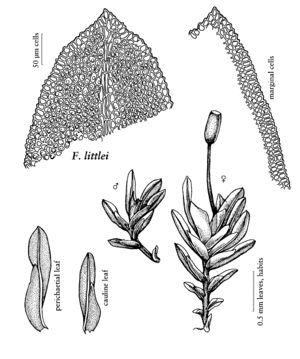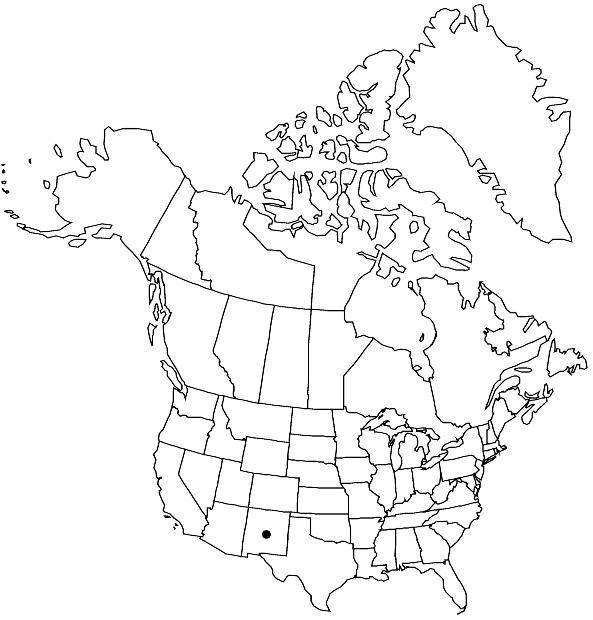Fissidens littlei
Moss Fl. N. Amer. 1: 249. 1939,.
Plants to 3 × 2 mm. Stem unbranched and sparingly branched; axillary hyaline nodules absent; central strand absent. Leaves as many as 8 pairs, ligulate, obtuse-apiculate to acute, to 1.5 × 0.25 mm; dorsal lamina narrowed proximally, ending at insertion or slightly decurrent; vaginant laminae 1/2–2/3 leaf length, ± equal, minor lamina ending on or near margin; margin crenulate, often irregularly so on vaginant laminae, elimbate; costa ending 3–5 cells before apex, bryoides-type; lamina cells 1-stratose, distinct, mammillose, firm-walled, irregularly quadrate to hexagonal, oblate on margin, 8–10 µm, somewhat larger, ± oblong in proximal parts of vaginant laminae. Sexual condition rhizautoicous and gonio-autoicous; perigonia gemmiform and on elongate stems. Sporophytes 1 per perichaetium. Seta 1.4–1.8 mm. Capsule theca exserted, erect, radially symmetric, to 0.5 mm long; peristome teeth anomalous, undivided, papillose; operculum to 0.3 mm. Calyptra cucullate, smooth, 0.3 mm. Spores 8–11 µm.
Habitat: Walls of small pockets in gypsum sinkholes
Discussion
This rare Fissidens, named in honor of the American botanist Elbert Little, is known only from the type locality and was recently re-discovered there by K. W. Allred (1998). The plants are pale green, probably the result of their occurrence in small pocketlike depressions where direct sunlight does not penetrate. The species has been confused with F. amoenus, but differs from the latter by its elimbate leaves, slightly smaller, mammillose laminal cells, oblate marginal cells, absence of enlarged pellucid cells in the proximal parts of the vaginant laminae, and undivided, papillose peristome teeth.
Selected References
None.

